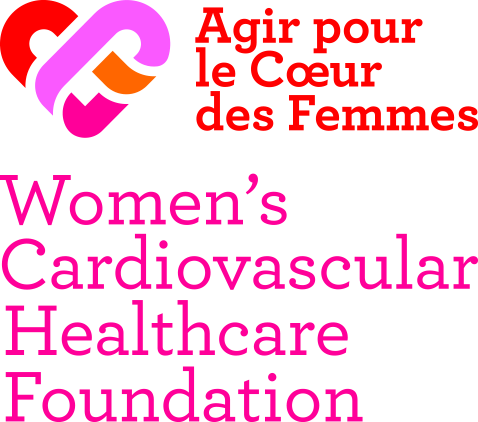
ANTICIPER
Physical Activity
How Cardiac Rehab Helps Women Heal Faster
Cardiac rehabilitation (CR) is an essential step in managing your cardiovascular disease, so don’t neglect it!
-173-1.jpeg)
Dr. Natalia Kpogbemabou, cardiologist and rehabilitation physician at the Wattrelos university hospital shares the essential components of rehab. Women must take the time to care for themselves and go to rehabilitation, especially after a cardiovascular event or when they have heart failure. Cardiac rehab is essential for limiting the negative effects of cardiovascular disease. They are often hidden for women and cause personal and social handicaps. Rehab is an important time to learn about your disease, deal with feelings of guilt, accept the event, get support from other patients, receive guidance from specially-trained teams and prevent a recurrence. It will help you age in good health and limit the harmful effects of this unscrupulous killer. As Women’s Cardiovascular Healthcare Foundation expert ambassadors and staff, our mission is to alert, anticipate and act.
What is Cardiac Rehabilitation?
The World Health Organization (WHO) defines cardiac rehabilitation as “The sum of activities required to influence favorably the underlying cause of the disease, as well as to provide the best possible physical, mental and social conditions, so that the patients may, by their own efforts, preserve or resume when lost as normal a place as possible in the community.” (WHO 1993)
It consists of multidisciplinary care with a structured program and customized objectives. Cardiac rehabilitation focuses on three areas: physical activity, therapeutic education and therapeutic adaptation.
It has three phases:
- Phase 1 is in-patient care at the hospital immediately following the cardiovascular event, which includes early physical mobilization, psychological and social support, and information about cardiovascular risk factors and prescribed treatments.
- Phase 2 generally takes place in an out-patient cardiac rehab center some time after the acute phase and generally includes around 20 sessions.
- Phase 3 consists of maintaining good lifestyle habits over the long-term. Continued physical activity as part of rehab is offered at certain centers like the heart and health clubs run by French regional cardiology associations.
What are the benefits of cardiac rehab?
CR reduces cardiovascular mortality by around 26% in coronary patients. It also reduces hospitalizations and improves patient quality of life.
The goal of CR is to improve disease symptoms and functional capacities. It helps people return to work, reduce anxiety and depression by improving self-confidence and promotes better medication adherence.
Who is cardiac rehab for?
Anyone with a cardiovascular disease can participate in one of the rehab phases. It is a recommended and evidence-based practice for patients with ischemic heart disease (after a heart attack or following implant of a coronary stent even if there was no heart attack or following bypass surgery), patients with heart failure, after a heart transplant or after a heart bypass or valve surgery.
CR is also beneficial for people with peripheral artery disease and those who have never had a cardiovascular event but are considered high risk, the goal being to prevent a cardiac complication from manifesting.
In France, CR sessions are fully covered by health insurance since they are considered an integral part of chronic disease management.
Regional, Sex and Age Disparities
Despite all the benefits of CR, only 25% of coronary patients are referred to it and just 10% of those who have heart failure.
There is a wide disparity among regions in France, with a low rate of admission to CR after hospitalization for a heart attack in Hauts-de France (20% men/women together, BEH43 December 13, 2016), while participation in the southwest is above 30%.
In addition to this regional disparity, there are also age and sex disparities. Women and older patients are less often referred to CR after a coronary event.
The oldest patients have much lower rehab rates. This is due to a limited number of rehab openings, which leads to selection of younger patients who are waiting to go back to work.
When it comes to sex disparities, an average of 1 in 3 men is referred to CR after a heart attack versus 1 in 5 women. This male/female disparity is related to social and societal factors. Among the elements that may explain this disparity are a majority male environment in CR, higher dependence on public transportation, and incompatibility between a CR program and home/family activities. Regardless, women aren’t spared from cardiovascular diseases.
After a cardiovascular event or if you are at risk for one, talk to your cardiologist and arrange things at home and work so you can take the time to focus on protecting your health.
SEE ALSO
Why Your Heart Isn’t Sweet on Sugar
Nutrition
What are we talking about exactly? We’re talking about sugars that makes things sweet, found in sugary foods and beverages that are high in sucrose and fructose. We’re also talking about starch found in bread (and cereals). Even potatoes aren’t totally innocent: they contain [...]
How Heart Transplants Support Birth and Rebirth
Gynecology
In the majority of cases, chronic heart failure is a contraindication to pregnancy because it could put the mother’s life in danger. During pregnancy and delivery, her heart has to work very hard. Certain medications prescribed for heart failure are known to cause birth defects (they’re considered [...]
What contraceptives are available in France in 2020?
Gynecology
Contraceptives with hormones Most of these contraceptives contain two hormones: estrogen and progestin. These are called estroprogestin contraception or combination birth control pills. Others are progestin-only contraceptives. They’re all very effective contraceptives. Estroprogestin [...]




